Posts Tagged ‘DFW ozone’
Morning News Names Jeff Mosier as its New Environmental Reporter
 Notice came on Friday that the Dallas Morning News had finally decided to fill the environmental beat reporter position left vacant by Randy Lee Loftis' departure. The lucky winner was announced via a response to a reader's comment on a story about the Lake Lewisville BLM fracking lease sale.
Notice came on Friday that the Dallas Morning News had finally decided to fill the environmental beat reporter position left vacant by Randy Lee Loftis' departure. The lucky winner was announced via a response to a reader's comment on a story about the Lake Lewisville BLM fracking lease sale.
"This is just one more reason the Morning News needs an environmental beat reporter," wrote the reader.
"That would be me," replied reporter Jeff Mosier, whose debut under his new job title was that day's story on the BLM fracking lease.
Shortly after, Mosier sent out this "job status" tweet with picture of the Lake Lewisville story, "My debut as environmental writer for @dallasnews. I'll spend more time at landfills than Super Bowls now"
That's a reference to Mosier's stint as a DMN SportsDay reporter covering the Cowboys on and off since at least 2004. Texas environmental politics is definitely a contact sport, but that's not the reason he was picked. He's a News journeyman who came to the paper with a lot of other former Times Herald employees in 1994 and rose through the ranks on a number of different beats. Here's a sampling of his coverage of Dallas City Hall goings-on. So local politics is not a foreign subject matter.
More on point, he was writing for the News' Tarrant County/Fort Worth Bureau in the early stages of the citizen backlash to urban drilling in the Barnett Shale. He's familiar with the issues surrounding fracking and wrote about them from roughly 2009 to 2013. Some examples:
Air tests at natural gas drilling sites fuel concerns in Barnett Shale
State will report today on Barnett Shale air pollutants
Texas House bill seeks to scale back city gas drilling restrictions
Arlington suing Chesapeake Exploration over claims of unpaid natural gas royalties
Cowboys Stadium site isn't expected to be used for gas drilling
From all previous indications, it looked like the News was grooming long-time Educational Reporter Jeffery Weiss to take Loftis' place. Weiss covered the unveiling of Downwinders' UNT Ozone Study and Dr. Robert Haley's Public Health Cost Study back in October, as well as the subsequent Dallas County Commissioners' resolution on reducing pollution from obsolete East Texas coal plants. But apparently Weiss is being put in charge of Energy coverage for the paper.
These moves are all part of a large shake-up of the entire Morning News newsroom as the paper tries to make the on-going rocky transition from print to digital. Lofttis' retirement could have been seen as a chance to do some necessary belt-tightening at the expense of a hunk of coverage. To the paper's credit, it resisted that temptation and named a new environmental beat reporter.
While Mosier's not a complete neophyte, he faces a steep learning curve. Give him some slack as he begins to reacquaint himself with The Way Things Really Work, and let's see if he can provide the public with needed clear-eyed reports from the front.
Going Backwards: DFW’s Annual Smog Average Went Up Twice in Two Days Last Week
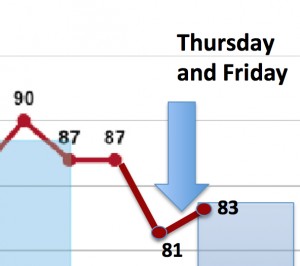 State officials and industry PR types thought they'd caught a break last summer when two things produced a much lower annual smog average, called a "Design Value."
State officials and industry PR types thought they'd caught a break last summer when two things produced a much lower annual smog average, called a "Design Value."
Since it's a three-year rolling average of smog numbers, past years roll off as new ones come on. Smog numbers from 2011 that had been so high they'd sent the average soaring, were finally rolling off and wouldn't be included in the average.
Second, unusually cooler temperatures and rain kept a new round of numbers lower. Combined, these factors resulted in a significant decrease in the smog average for 2014.
But in 2015, a more typical summer, or at least August, is bringing the average back up (Over 60% of the 100 highest recorded levels of smog this summer occurred in the last 30 days). Smog levels are higher across the board this year than last. There are more monitors recording more "exceedences" of the national smog standard. Leading them all is the Denton monitor, which saw ozone levels rise on Thursday and then skyrocket on Friday. The numbers were so high on both days they moved the needle of the annual smog average, the DFW Design Value, up from 81 to 82 parts per billion (ppb) on Thursday and up to 83 ppb on Friday. The standard is 75 ppb.
Even though Houston has recorded higher smog numbers than DFW this year, 2014's lower smog numbers was even more anomalous for that city than for North Texas. Last year's much lower numbers in the Bayou City are canceling out this year's much higher numbers. So that in 2015, DFW's Denton monitor's annual average of 83 ppb is the highest in the State of Texas.
And that means that according to the official accounting of the Clean Air Act, DFW has dirtier air than Houston. And not for the first time.
It also means we're rolling backwards in terms of air quality progress. With at least a whole month of "ozone season" to go, DFW's smog average is now only a little lower than it was in 2009. It would only take one or two more bad days to raise the average again.
This is the second time in four years that DFW's smog average has increased during the implementation of a state clean air plan for the area. Neither plan required new controls on large industrial polluters significantly contributing to the problem, like the gas industry, East Texas coal plants, and Midlothian cement kilns. There may be some connection there.
Given the state's stellar two decade-old track record of never meeting a clean air plan deadline, its latest plan was always likely to fail. But a federal court roll back of the deadline to get to the 75 ppb standard at all DFW monitors, from 2018 to 2017, plus these new 2015 smog numbers, make it DOA in the real world.
However, in the regulatory world governing these things officially, the plan is still being reviewed by the EPA and, believe it or not, could get approved if citizens don't make a big stink.
That's why you need to sign our Change.org petition to EPA to reject the state's plan and send an email to EPA officials requesting they write a new clean air plan instead of the state of Texas.
Many clean air advocates cautioned that 2014 should be seen as a outlier, and this summer is justifying that caution. If the experts are right, climate change will mean future summers will be more like 2011 than 2014. We've got to have a more realistic approach to the goal of safe and legal air. The State of Texas will not provide that. EPA can.
The Impact of the EPA’s New Methane Rules on the Barnett Shale? TBD
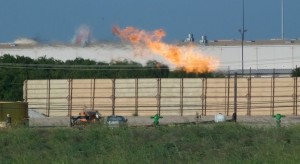 Despite all the gnashing of teeth by industry and hallelujah choruses from the Big Green groups, the new methane rules proposed by the Obama Administration this last week have no immediate impact on facts on the ground in the Barnett Shale.
Despite all the gnashing of teeth by industry and hallelujah choruses from the Big Green groups, the new methane rules proposed by the Obama Administration this last week have no immediate impact on facts on the ground in the Barnett Shale.
That’s because, like the recent coal CO2 rules, they regulate future facilities, not the 17,000 or so wells, plus infrastructure, already operating in the Barnett.
They do bring a welcome spotlight to “downstream” facilities like gathering lines and compressors, which is where most of the methane in the gas fuel cycle escapes. They also concede the connection between methane releases and smog (“…reduction of VOC emissions will be very beneficial in areas where ozone levels approach or exceed the National Ambient Air Quality Standards for ozone”), as well as methane and more toxic Volatile Organic Compounds such as Benzene and Toluene (“The measures proposed in this action achieve methane and VOC reductions through direct regulation. The hazardous air pollutant (HAP) reductions from these proposed standards will be meaningful in local communities.”)
EPA’s new rules set a floor for emissions that the industry, over time, will eventually get closer to meeting as a while with the turnover of equipment. But that could take decades. Meanwhile, the agency is only offering “guidelines” to states with smog problems – like Texas – for new pollution controls to reduce methane at existing facilities.
Under this part of the regulation, areas like DFW that host large concentrations of gas pollution sources and are officially categorized as “non-attainment” for smog, or ozone, standards will supposedly be the beneficiaries of new EPA-written “Control Technique Guidelines.”
According to EPA, these CTGs “provide an analysis of the available, cost-effective technologies for controlling VOC emissions from covered oil and gas sources. States would have to address these sources as part of state plans for meeting EPA’s ozone health standards.”
If you live in Texas, you’ve already chortled at that last sentence. Really? The Texas Commission on Environmental Quality (TCEQ) would have to use these new technologies on gas sources in their new clean air plans for DFW? Something they’ve refused to do for the last two clean air plan cycles dating back to 2010?
Well, they have to address them at least. And a lawsuit aimed at gutting the new rules is a form of addressing isn’t it?
These are guidelines only, up to the state to enforce – as the EPA admits. “States have some discretion in applying these guidelines to individual sources.” The leverage EPA has is that it still needs to approve these state-generated clean air plans and it can make an official determination that a state didn’t follow the guidelines and send it back to be amended.
This might not be all that important except that the State of Texas is going to have to write a new air plan for DFW in the next year or face the prospect of a federal plan being written in its stead. The one Austin submitted in July is already falling apart on several fronts, and TCEQ has to submit a whole new version or face an EPA-imposed one.
Will the state at least have to acknowledge these guidelines in this current air plan controversy? No. The states have two years to fold the proposed CTGs into their SIPs. So they don’t even have to come into play until this current state plan fails, and Austin or the EPA begin to write a replacement. And why might this plan fail? In part, because it doesn’t apply modern controls to major sources like oil and gas facilities.
You might remember in July, a total of 11 studies were collectively released that concluded the Barnett Shale was leaking 50 percent more methane than previously thought. The day before the EPA made its announcement this week, a national version of those studies estimated US methane pollution from oil and gas was being underestimated by 30%. That’s important because many models of air pollution used by the EPA and the states use those standard emissions estimates that now look obsolete. If you increase the amount of methane, and associated pollutants, by 30-50% in those models, the results might look very different.
So even though the state isn’t officially required to include this new approach to decreasing VOC pollution until 2017 or later, it’d be nice to see it adopted now and have an immediate impact on a region that has a longstanding chronic smog problem. But as long as Texas is in charge of writing DFW’s air plans, that’s just not gong to happen.
EPA Hearing Afternoon Delights: Medical Panel and Another Posse Swearing-in
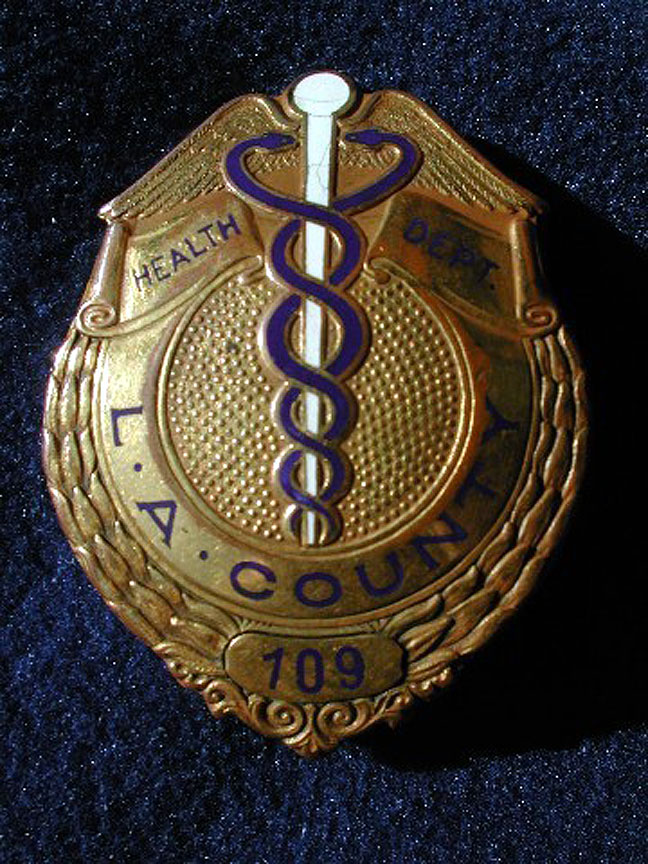 There's still some five-minute speaking slots available for Thursday's all-day EPA National public hearing at Arlington City Hall on a new ozone standard – mostly in the afternoon and evening. So if you haven't signed up yet, please do so. The EPA staffers will stay as long as there are people who want to testify. So if you get off work and want to come over and speak out at the last minute – you can. Some of you may remember the 2009 national cement plant hearing where we had almost 100 speakers and kept things going until 8:30 pm. We need to repeat that performance.
There's still some five-minute speaking slots available for Thursday's all-day EPA National public hearing at Arlington City Hall on a new ozone standard – mostly in the afternoon and evening. So if you haven't signed up yet, please do so. The EPA staffers will stay as long as there are people who want to testify. So if you get off work and want to come over and speak out at the last minute – you can. Some of you may remember the 2009 national cement plant hearing where we had almost 100 speakers and kept things going until 8:30 pm. We need to repeat that performance.
To sign-up today, e-mail EPA staffer Eloise Shepard at shepherd.eloise@epa.gov… Or just show up on Thursday in Arlington and grab an open slot.
As an added bonus and attraction, there's a special feature in at the end of the scheduled lunch break that may provide an incentive to attend. At 1:45 pm Downwinders will be sponsoring another mass swearing-in of its Citizens Clean Air Posse, complete with official badges. Because this is a national hearing, the original DFW-centric language from the earlier TCEQ hearing has been slightly re-written to read as follows:
As a member of the Clean Air Posse I pledge to do my duty to uphold the federal Clean Air Act and take responsibility to provide cleaner air to my fellow citizens – especially since the State of Texas doesn’t seem to give a damn anymore.
I pledge to help persuade the federal marshals at the EPA to make the State of Texas follow the law and provide safe and legal air to breathe.
I pledge to bring an end to the reign of lawlessness and disregard for public health, and the Clean Air Act, by the State of Texas, so help me God.
Membership in the posse entitles you to be your own Clean Air Act enforcer and make citizens' arrests of violators. It also allows you to join other members in organized round-ups to cajole and harass federal officials to do their job. Plus, you get to wear a nice-looking shiny badge while you're doing all of the above. But you don't get a badge unless you show up.
Immediately following the Posse swearing-in at 2 pm will be a panel presentation by at least three physicians coming to testify at the hearing. Because regardless of the politics involved in the decision to lower the federal smog standard, this is still a public health issue, one about how poisons in the air cause illness and disease among millions of Americans.
Dr. Susan Pacheo of the University of Texas Health Science Center in Houston specializes in Pediatric Allergy and Immunology and will speak to the threat posed by smog to children's health. Dr. John Kissel specializes in Internal Medicine in St. Louis, Missouri to discuss the impacts of smog of public health in general. DFW's own Dr. Robert Haley is a toxicologist at UT-Southwestern, and led last year's effort by the Dallas County Medical Society to close the oldest, dirtiest East Texas coal plants that affect North Texas air quality. He'll be speaking about the local impacts of smog on the air you breathe.
This is the closest thing to a rally for clean air as DFW has seen in some time, so please come out and be a supporter if you can make it. EPA needs to receive the very strong message that the public wants safe and legal air to breathe – especially in states like Texas that will never pursue that goal on its own. Your presence at the hearing tomorrow is a direct rebuke to the Texas Commission on Environmental Quality, Governor Greg Abbott, and every other Texas elected and regulatory official who takes the position that our air is just fine the way it is. Don't give them aid and comfort by sitting this one out. Show up and add your voice to those saying that Austin doesn't represent us in this battle.
Citizens To Form Posse, Demand State Enforce the Clean Air Act at Thursday Hearing on New DFW Air Plan
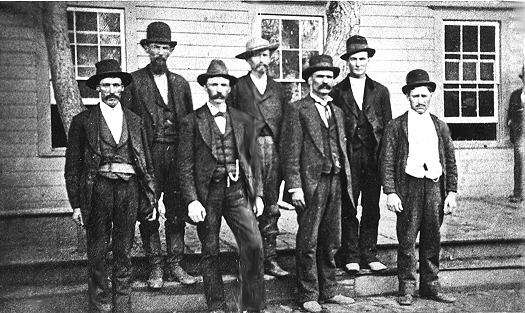 (Arlington) Critics of a new plan to clean the air in Dallas-Ft. Worth are using a public hearing on Thursday evening to accuse the state of Texas of breaking the law by not requiring the implementation of pollution control technologies already in widespread use to help lower smog levels in North Texas.
(Arlington) Critics of a new plan to clean the air in Dallas-Ft. Worth are using a public hearing on Thursday evening to accuse the state of Texas of breaking the law by not requiring the implementation of pollution control technologies already in widespread use to help lower smog levels in North Texas.
“We’re asking residents to come out and get sworn into a citizens posse to help us make the state follow the Clean Air Act,” said Jim Schermbeck, Director of the local clean air group Downwinders at risk, one of the leading opponents of he new plan. “Austin is going to ridiculous, Monty Python-like lengths to avoid new controls on the Midlothian cement plants, East Texas coal plants, and local gas facilities in this new plan – even though those controls are now commonplace in each industry.”
Thursday’s public hearing centers on a new plan to comply with the federal ozone standard of 75 parts per billion (ppb) by 2018. DFW has never achieved such a low level of smog, and only this last year dipped below the 1997 standard of 85 ppb for the first time with the help of cooler, wetter summer.
EPA says a state plan like the one the Texas Commission on Environmental Quality is proposing for DFW must include “all Reasonable Available Control Technologies,” and “all Reasonable Available Control Measures” to get lower smog levels as “expeditiously as possible.” EPA defines these as technologies as ones that are “technically and economically feasible.” But according to Schermbeck, the state of Texas is deliberately ruling out local use of pollution controls already adopted by industry that could speed cleaner air.
He cited three examples. Selective Catalytic Reduction, or SCR acts much like the catalyst on cars, only on a much larger scale for industrial plants. It’s already in use on at least half a dozen European cement plants where it’s reduced smog-forming pollution by up to 90%, and on many coal-fired power plants across the world and in the US, where it achieves the same results. Yet the TCEQ DFW air plan doesn’t require SCR on the largest single sources of smog pollution in the region, the Midlothian cement plants, or the East Texas coal plants that are known to impact DFW air quality, saying the technology isn’t “feasible.” TCEQ maintains this stance even though the Holcim cement plant in Midlothian has announced plans to include an SCR unit on one of its own kilns.
“Here’s a pollution control technology already in operation and achieving great results, with a cement plant in North Texas already adopting it, but the state’s position is that it isn’t ‘feasible’. It’d be comical if it wasn’t delaying cleaner air for over 6 million people that haven’t had it in decades.”
Besides ignoring SCR on cement and coal plants, Schermbeck said the TCEQ has also ruled-out electrification of large gas compressors as “infeasible” – despite the widespread use of electric compressors In the Barnett Shale already and the requirement of municipalities like Dallas and Southlake to allow nothing but electric compressors within their city limits. According to a 2012 study by the Houston Advance Research Consortium, compressors could increase downwind ozone levels as much as 3 to 10 parts per billion. There are at least 647 large compressors in the DFW “non-attainment area” covered by the TCEQ air plan.
“Requiring just these three technologies that are already on the market and being used in their respective industries could reduce air pollution by thousands of tons a year and help us achieve compliance with the new federal ozone standard much quicker,“ said Schermbeck. He said they all pass the test of being feasible according to EPA definitions. “By law, they should be required.”
Instead, the state is relying exclusively on a new federal gasoline mix being introduced in 2017 to achieve the required 75 ppb standard by 2018. Although it’s expected to help lower ozone levels across the country, it won’t get DFW down to the level of 75 ppb alone. To make the plan work on paper, the state has had to estimate oil and gas pollution downward in a way Schermbeck and others claim is unrealistic.
“Basically, the state’s approach is to do absolutely nothing for the next three years and hope the federal gasoline change brings it “close enough” to the lower standard. But hope is not a plan.”
Schermbeck said his group would be passing out badges to members of their clean air posse and recruiting residents to persuade the EPA to reject the state’s proposal. The federal agency has the final say. But there’s also always court – where many clean air rules for the state of Texas have been decided over the last 20 years. “If government won’t enforce the law, we may have to do it ourselves.”
2014 DFW Smog Report: Good News But Don’t Hang Up the Gas Mask Yet
 For the first time since DFW began recording its smog levels, the region's three-year running average dipped below the 1997 eight-hour 85 parts per billion (ppb) standard. After years of leveling off at around 86-87, it's dropped to 81 ppb. That's good news.
For the first time since DFW began recording its smog levels, the region's three-year running average dipped below the 1997 eight-hour 85 parts per billion (ppb) standard. After years of leveling off at around 86-87, it's dropped to 81 ppb. That's good news.
DFW's decrease is attributed to 2011's terrible numbers rolling off the board and a wetter, cooler and windier summer than normal these last five months or so. As both drought-ridden 2011 and this year's results demonstrate, weather still plays an extremely critical role in how large or small our smog problem will be. Another summer or two like 2011 could easily put us back over the 1997 standard. More wet and cooler weather could see the decrease continue.
The news would be better except that we were supposed to have originally accomplished this milestone in 2009, then again last year after a second try, according to the Texas Commission on Environmental Quality (TCEQ).
As it is, we still haven't reached the current, more protective 2008 national standard that was revised downward to 75 ppb after a review of the scientific literature.
In January, TCEQ will host a public hearing on its proposed "plan" to EPA to meet that goal that predicts most, but not all DFW monitors will reach 75 ppb by the summer of 2018.
Despite overwhelming evidence that new controls on the Midlothian cement plants and the reduction of gas industry pollution could speed this achievement, TCEQ's new plan contains no new pollution control measures on any major sources of smog polluters – cement kilns, coal plants, gas sources – but instead relies on the federal adoption of a new lower-sulfur gasoline mix for on-road vehicles. Like past proposals by Rick Perry's TCEQ, this one depends solely on the feds to get them into compliance. TCEQ isn't lifting a regulatory finger to help.
And its new plan once again aims high, not low. At last count, there were at least three Tarrant and Denton County monitors that TCEQ admitted would still be above the 75 ppb standard at the end of 2018. "Close enough" is the reply from Austin.
From a public health perspective, it's even worse. Why does the ozone standard keep routinely going down? Because new and better evidence keeps accumulating to show widespread health problems at levels of exposure to smog that were once considered "safe." About every five years, the EPA's scientific advisory committee must assess the evidence and decide if a new standard needs to be enforced to protect public health.
For most of the last ten years, the position of this independent panel of scientists is that the standard should be somewhere between 60 and 70 ppb. They were ignored in 2008. They were ignored in 2011. They once again came to this conclusion last May. What was the evidence that persuaded them? That the current 75 ppb standard for smog causes almost 20% of children in "non-attainment areas" to have asthma attacks, and leads to hundreds of thousands of deaths every year. Cutting the standard to 60 ppb reduces those deaths by 95%. Since the Clean Air Act states the EPA is duty bound to set a smog standard protective of human health, 60 ppb seems to be the threshold level that the current scientific literature says is actually safe for the majority of the population most vulnerable to the impact of bad air. By contrast, a smog level of 70 ppb only reduces those deaths by 50%. (Policy Assessment for the Review of the Ozone National Ambient Air Quality Standard, U.S. Environmental Protection Agency, Office of Air and Radiation, Office of Air Quality Planning and Standards, Health and Environmental Impacts Division, Ambient Standards Group, August 2014)
By December 1st, EPA Administrator Gina McCarthy must decide whether to officially recommend a standard in that 60-70 ppb range. It looks as though this time, the EPA might just endorse what the scientists are recommending, although it's unclear whether it'll be the upper or lower part of that range.
So even while the TCEQ is saying it's "close enough" to achieving the 75 ppb standard left over from George W's administration by 2018, the evidence is that level is too high to prevent large public health harms and must be lowered. A lot.
This is why it's so infuriating that the TCEQ is satisfied with getting only "close enough" to a 2008 standard that's about to become obsolete. Austin knows it could demand better air pollution control measures on the market right now that would accelerate the decrease in smog. It knows the pubic health would benefit from requiring such measures. But it's willing to condemn DFW children and others at risk for many more years for the sake of keeping its "business-friendly" reputation.
And while this year's slip below the 85 ppb standard is a sign of some progress, it remains true that DFW still has the worst air in Texas – a title we took from Houston years ago. Take a look at the chart summarizing the 2014 ozone season across Texas. Despite the nicer weather, DFW still had almost twice as many readings above 75 ppb as Houston and four above the 85 ppb standard. Houston had no readings above 85. In fact, San Antonio was the only other city to record a level so high – once.
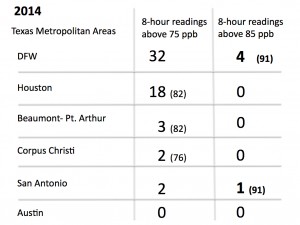 DFW still has a smog problem and all it takes is another hot and dry summer to see it escalate. We need the help more controls on major sources could give us. We need Selective Catalytic Reduction on ALL the Midlothian cement and East Texas coal plants. We need electrification of gas compressors in the Barnett Shale. This should be the message to both the TCEQ and EPA during the public hearing in January.
DFW still has a smog problem and all it takes is another hot and dry summer to see it escalate. We need the help more controls on major sources could give us. We need Selective Catalytic Reduction on ALL the Midlothian cement and East Texas coal plants. We need electrification of gas compressors in the Barnett Shale. This should be the message to both the TCEQ and EPA during the public hearing in January.
DFW smog in 2014: we've met the Clinton era standard for now, on the way to trying to get "close enough" to the W Standard, and still very far from a new Obama standard. Don't hang up the gas mask yet.
Sierra Club Sues EPA Over Delayed “Bump Up” for DFW Smog Status
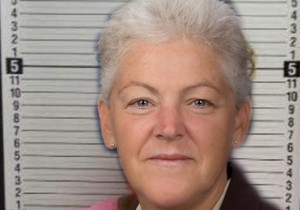 DALLAS, TX – The U. S. Environmental Protection Agency (EPA) missed a key deadline in 2013 to classify smog air pollution in Dallas-Fort Worth as ‘severe,’ prompting the Sierra Club to file suit against the agency yesterday afternoon in the U.S. District Court for the District of Columbia for failing to properly act to protect the health of the people of North Texas.
DALLAS, TX – The U. S. Environmental Protection Agency (EPA) missed a key deadline in 2013 to classify smog air pollution in Dallas-Fort Worth as ‘severe,’ prompting the Sierra Club to file suit against the agency yesterday afternoon in the U.S. District Court for the District of Columbia for failing to properly act to protect the health of the people of North Texas.
The levels of smog in Dallas-Fort Worth are among the highest in the country, and only smoggy California, Houston and Baltimore have levels higher than North Texas. Ozone is the main ingredient in the smog in Dallas-Fort Worth. It triggers asthma attacks in children and is responsible for the red and orange bad air alert days the region sees every year.
“While we recognize that the Environmental Protection Agency has many priorities, nothing is more important than protecting our children from the dangers of smog and the asthma attacks that it can trigger,” said Dr. Neil Carman of the Lone Star Chapter of the Sierra Club. “The Clean Air Act has mechanisms in place to reduce pollution for areas with long-standing smog problems like Dallas-Fort Worth, but those mechanisms don’t get triggered unless EPA acts.”
The Texas Commission on Environmental Quality (TCEQ) had a federal deadline to meet the public health standard by 2009, and when the state’s clean air plan failed to reduce pollution levels to meet the protective standards of the Clean Air Act, regulators received an extension to meet the standard by the end of the 2012.
State regulators again failed to develop a plan that would lower smog levels to protect people living in the region. After both failures, the law required EPA to classify Dallas-Fort Worth as having a “severe” ozone problem and publish the notice in the Federal Register in 2013. This action would have required polluters to take additional steps to clean our air. Unfortunately, U.S. EPA missed the deadline, prompting the Sierra Club to file suit late Tuesday, May 20, 2014.
"The Clean Air Act requires polluters to take extra steps in places like Dallas-Fort Worth that have been chronic violators of smog standards," said Jim Schermbeck with Downwinders at Risk, a clean air group based in Dallas-Fort Worth. "But asking Rick Perry to enforce the Clean Air Act in 2014 is like asking Wall Street tycoons to care about low-income families. That's why six million residents need the EPA to do its job and guarantee North Texas safe and legal air."
Because the EPA missed the 2013 deadline to properly classify the Dallas-Fort Worth area as a “severe” ozone smog area, industries are being allowed pollute more than they would otherwise, delaying the protections children, the elderly and people with respiratory illnesses in the region need.
"Today's action is the first step in requiring the EPA to finally solve the ozone problem in D-FW. Too many Texas children end up in the emergency room or miss school because of asthma and other breathing difficulties. We have to hold EPA to its legal requirements to give these families a chance to breathe easier," said Nia Martin-Robinson, Beyond Coal organizer with the Sierra Club in Texas.
Coal-fired power plants across Texas, cement plants in Midlothian and fracking in the Barnett Shale are significant contributors to smog-forming pollution to the region. State regulators have failed to require the most up to date pollution controls on these sources, contributing to the repeated failure of state clean air plans.
